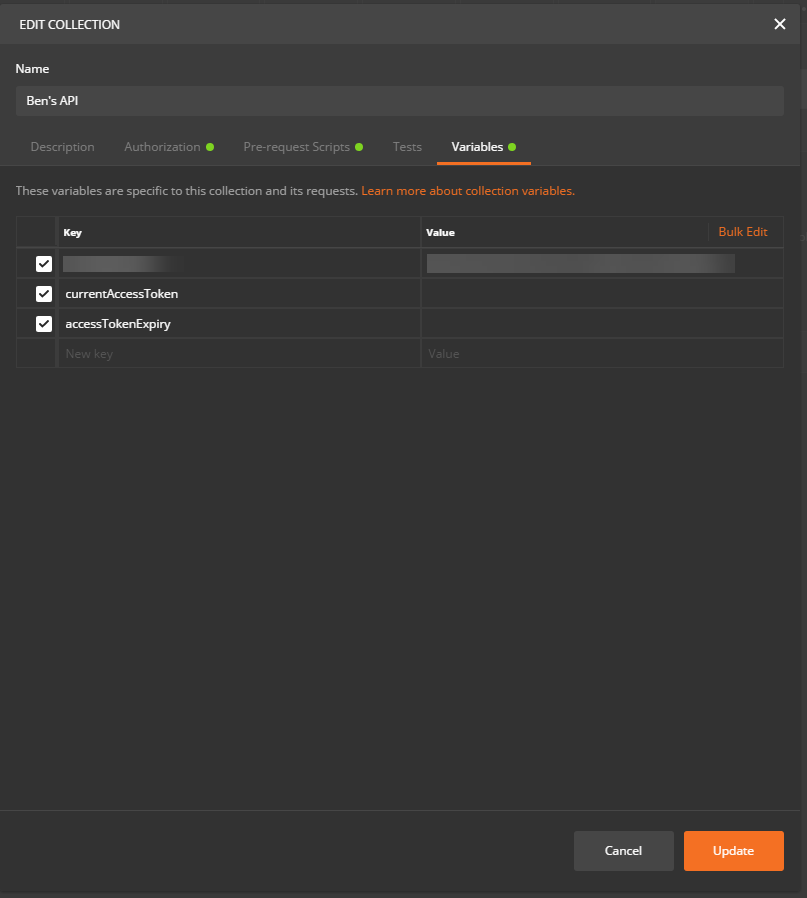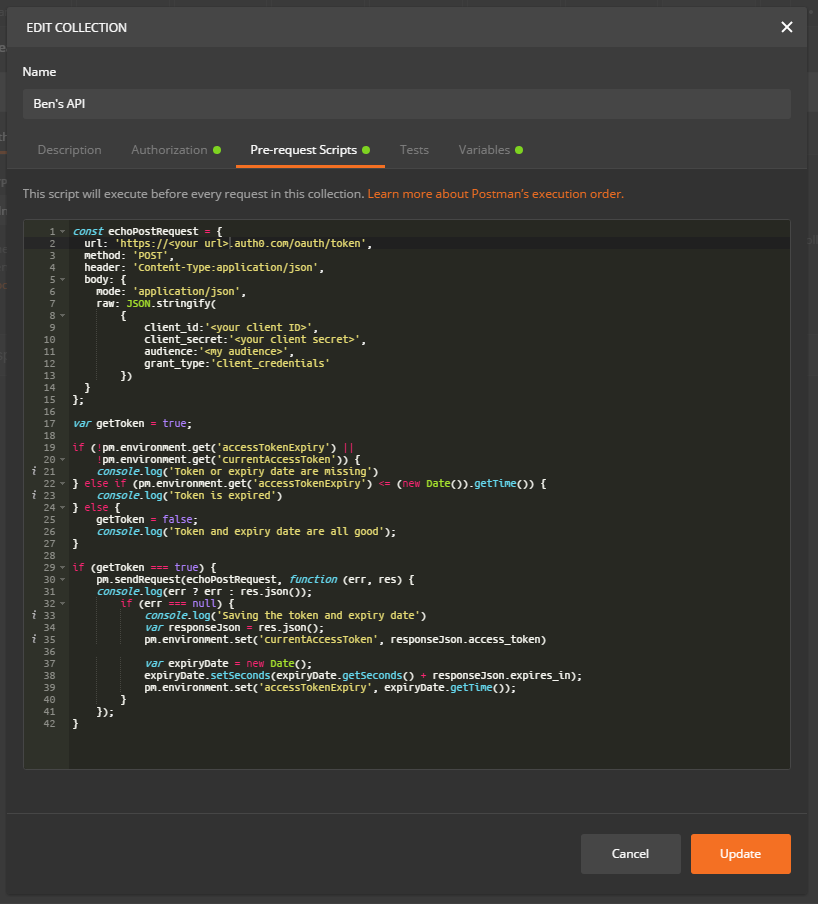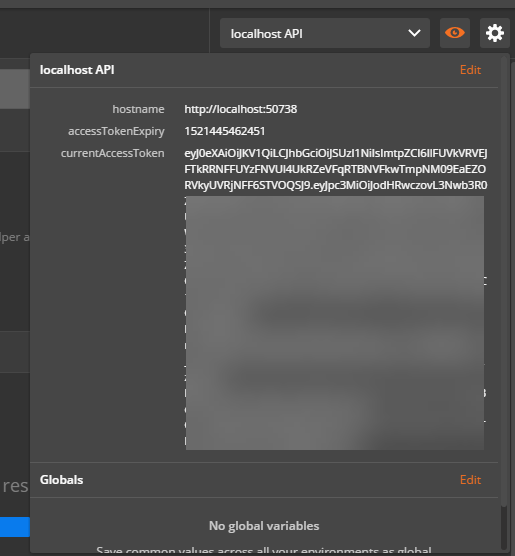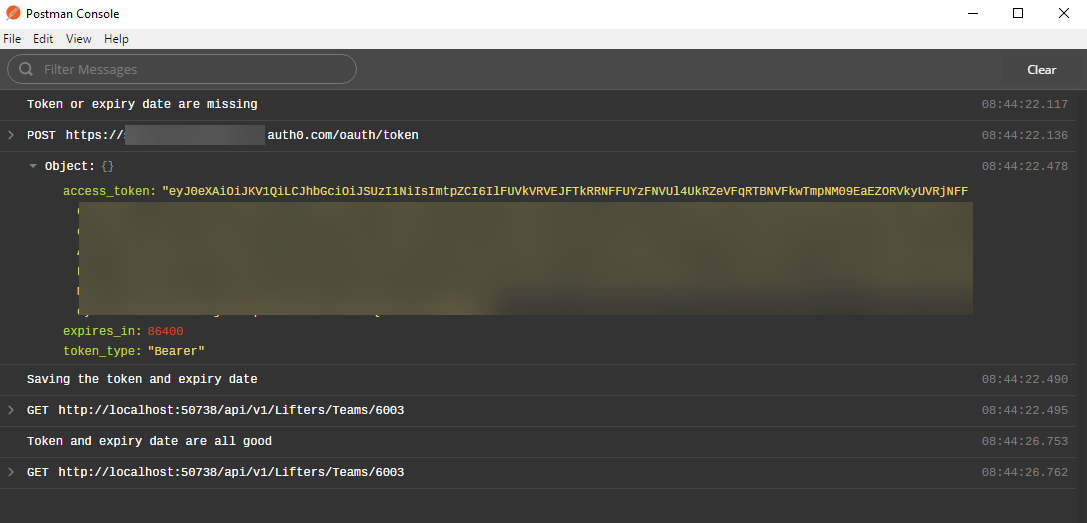I love using Postman but it is a pain having to remember to enter a valid Bearer Token. The following is a Javascript pre-request I’ve used to automate the process.
Background
I’m using Auth0 for auth. My app consists of a Vue.js SPA and a .NET Core API.
Pretty much every endpoint in my API requires authentication. As I write each endpoint in my API I’m writing a Postman request so I can test it.
I have a Postman request to Auth0 to request a token.
To date I’ve been manually entering that token whenever I wanted to use an API endpoint. As you can imagine, this isn’t effective.
I just want my requests to always use a valid bearer token!
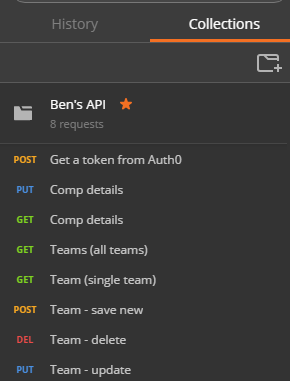
Step 1 - Create some variables
We to create two variables:
- Current bearer token
- Expiry date of the above token
You need to think about the scope of the variables. They can be anywhere from a global (across any test you’ve got) to the individual test. Checkout this article about scope in Postman.
I’m choosing to create my variables relative to the collection.
- Went to Ben’s API
- Clicked the three dots to open the menu
- Clicked Edit
- Let’s jump straight into the Variables tab and create our two variables which I’ve called currentAccessToken and accessTokenExpiry
Step 2 - the Pre-request Script
I went into Pre-request Scripts and wrote a script that does one of three things:
- If the token or expiry date is missing I get a fresh token and set the value
- If both variables are set but the expiry date is in the past I get a fresh token
- If there is a token AND it’s valid (it’s only good for 24 hours) then do nothing
Here’s the code
A few things to note:
- I put some console.log statements as Postman has a console and logging is always a good thing
- I did put all my secrets in this script. I’m not crazy about that but Postman doesn’t have a solution for secrets management. I’m going to try and use a test account in Auth0 to mitigate any issues
- You cannot call another Postman request from a script. That would have been really useful so instead I ended up writing this
- You could should write some Tests under the test tab to confirm the token is set, it’s valid, etc. I haven’t yet got around to that
Step 3 - Authorization Setup
In the Authorization tab I set the
- Type to Bearer Token
- Token to {{currentAccessToken}}. This is the token we created and set via the pre-request script
Step 4 - Use the token!
For all your API requests do the following
- Go into the Authorization tab
- Under Type select Inherit auth from parent
You’re done!
But wait there’s more - Console and View the variables
In the top right-hand corner there is an eye icon. If you click it you can see the current state of all your variables. You can also click Edit and change the contents.
In the bottom-left corner is a console from which you can view all the logs you’ve written. I found it useful for debugging.
You can also use it to confirm that the pre-request script runs before each of your individual tests in your collection.
